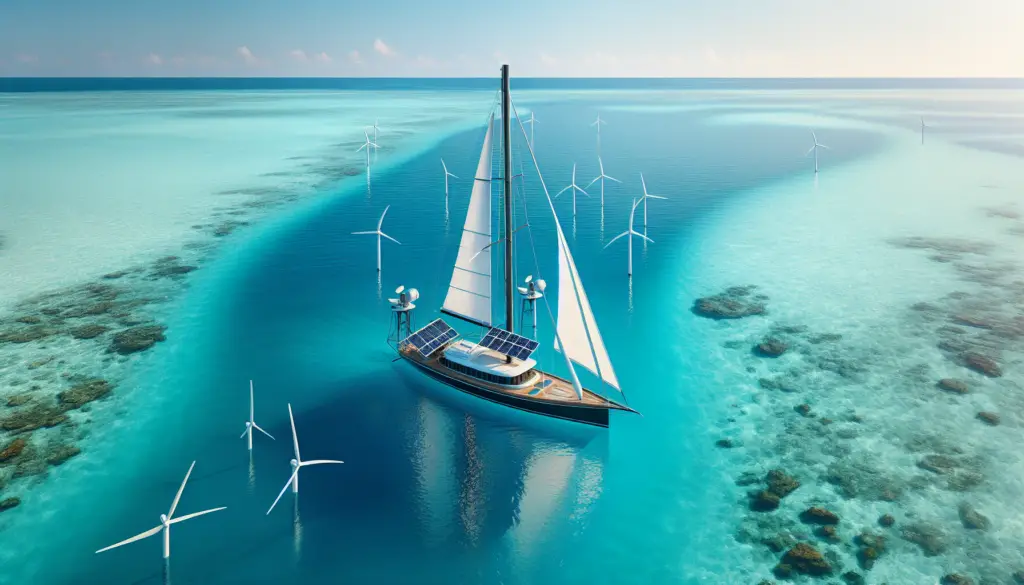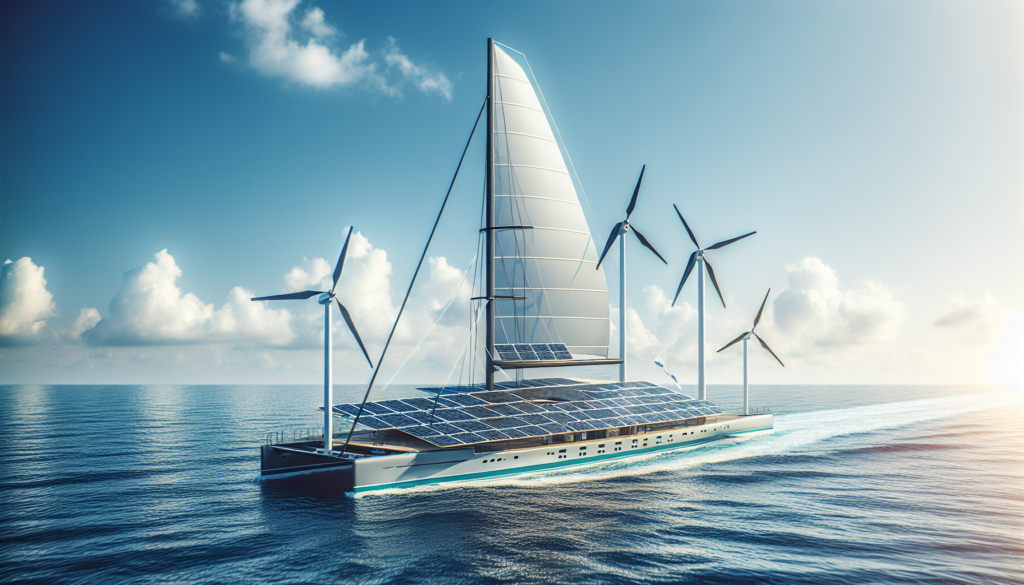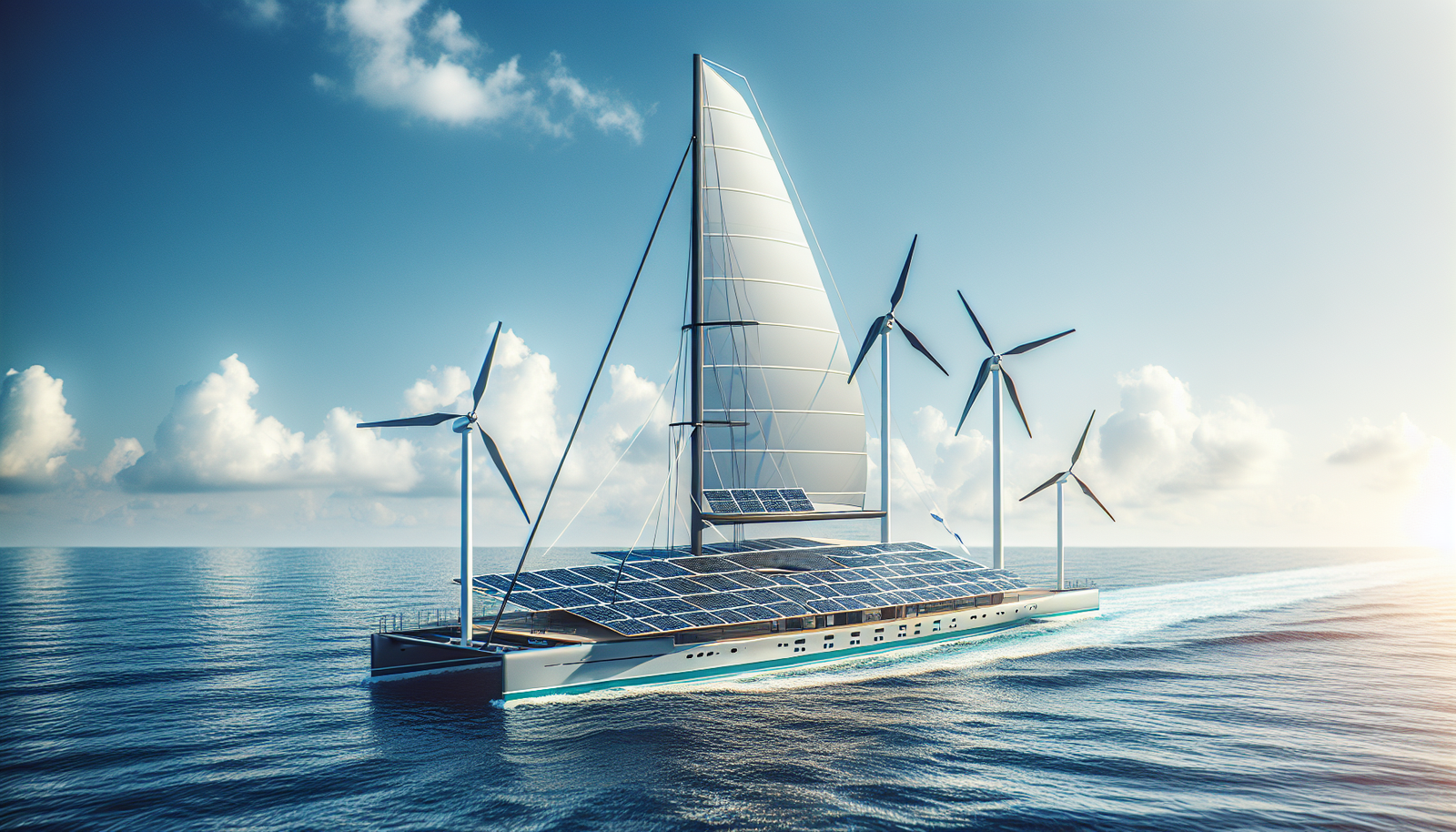Are you an avid sailor who’s increasingly concerned about the impact your sailing activities could be having on the environment? In “Sustainable Sailing: Eco-Friendly Strategies for Sailors,” you’ll find a treasure trove of eco-friendly practices that allow you to pursue your passion without harming our precious marine ecosystems. This article draws light on how sailors, like you, can easily implement sustainable solutions, shifting from potential polluters to custodians of the seas, ensuring you’ll leave only gentle ripples and not carbon footprints.

Understanding Sustainable Sailing
In recent years, there has been growing concern about the impact of human activity on the planet. Many industries, including sailing, are looking at ways they can reduce their environmental footprint. sustainable sailing is all about implementing practices that limit negative environmental impacts, actively contribute to ecological balance, and demonstrate respect for biodiversity and ecosystems.
Global context of sustainable sailing
Sailing, by its very nature, is closely linked to the environment. As such, it comes with a unique set of environmental concerns and responsibilities. While sailing might seem eco-friendly – harnessing the wind to propel a vessel across the water – the industry has numerous areas where sustainability improvements can be made. Traditional sailing practices have commonly overlooked these impacts. The global context of sustainable sailing now centres around rectifying past indiscretions and championing more eco-friendly methods to set a new standard for the industry.
Fundamental principles of sustainability in sailing
The fundamental principles of sustainability in sailing involve consciously evaluating and tirelessly optimizing every aspect of sailing practice. By doing this, sailors can reduce their carbon footprint, prevent pollution, mitigate erosion, preserve marine life, and contribute to healthier oceans. It encompasses everything from eco-friendly boating gear and renewable energy sources to strategies for carbon-neutral cruising and responsible waste management.
Eco-friendly Sailing Equipment
Sustainable sailing starts with the equipment you use. Eco-friendly sailing gear is both a practical and environmental choice, from the hull material of your boat to the kind of ropes and sails you use.
Using renewable materials for sailing equipment
Traditionally, sailing equipment has been crafted from materials that are robust, durable, and resistant to the aggressive saltwater environment. However, many of these materials are not eco-friendly. Today, renewable, biodegradable materials like hemp and organic cotton are making a comeback in the production of sails and ropes. Some companies are even designing boats using recycled fibreglass and carbon fibre or resins derived from natural sources.
Choosing equipment with a long lifespan and recyclability
Durability plays an essential role in choosing green fleet equipment. Investing in quality gear that’s designed to last not only saves you money in the long term but also reduces overconsumption and waste. Additionally, when the time comes to replace your gear, consider options that can be recycled or properly disposed of in an environmentally conscious way.

Sustainable Boat Maintenance
Maintaining your boat is crucial for ensuring it functions efficiently and lasts a long time. However, many traditional maintenance practices are far from sustainable. Fortunately, there are several eco-friendly alternatives that you can employ.
Eco-friendly boat cleaning techniques
Instead of using harsh, toxic cleaning chemicals to clean your boat, switch to biodegradable, organic alternatives. These can effectively eliminate algae, salt and other dirt without causing harm to the oceans’ sensitive ecosystems. Also, consider water and energy-saving practices, such as cleaning your boat on land where the runoff can be effectively managed.
Maintaining equipment for longer life
The better maintained your equipment, the less frequently it will need replacing. This not only means less waste but also less energy and resources used in producing new equipment. Regular check-ups, cleaning and repairs, as well as cautious sailing to avoid unnecessary wear and tear, can significantly increase the lifespan of your gear.
Responsible Waste Management On-board
Waste management is a critical issue for every sailor. Mismanagement of waste can result in pollution, harm to marine life and damage to underwater ecosystems.
Proper disposal techniques at sea
Unfortunately, the ocean was traditionally seen as a dumping ground. Today, we understand the harmful impacts of such actions. Proper waste disposal at sea is essential. This means retaining all non-biodegradable waste onboard until you can dispose of it appropriately on land, never throwing garbage overboard, and using on-board recycling systems and eco-friendly waste treatment where possible.
Using biodegradable goods on-board
Switching to biodegradable goods can significantly reduce the amount of waste generated on your boat. This applies to everything from food packaging to cleaning products and toilet paper. Every small step towards minimizing waste counts.

Importance of Energy Efficiency
Energy efficiency aids in drastically reducing the carbon footprint of your sailing activities and plays a crucial role in attaining sustainability.
Harnessing renewable energy sources
Instead of relying on polluting diesel engines for energy, many sailors are turning to renewable sources. Wind turbines, solar panels, and hydro generators offer great ways to produce clean energy on board. They’re sustainable and can often provide the power you need to run everything from navigation systems to devices and appliances.
Energy-efficiency in sailing equipment
There’s a broad range of energy-efficient sailing equipment on the market that can significantly reduce your energy use. LED lights, energy-efficient appliances, and high-tech navigation systems optimized for low power consumption are just a few examples. It’s also about remembering basic energy-saving habits, like turning off lights and devices when not in use.
Sustainable Sailing Practices
Sailing sustainably is about more than the gear you use; it’s a way of sailing that minimizes environmental impact and promotes the well-being of our oceans.
Practicing efficient sailing routes
Efficient route planning can help save fuel, reduce emissions, and minimize disturbances to wildlife. It doesn’t necessarily mean the quickest route from point A to point B, but the one that is the most energy-efficient and least likely to disrupt marine ecosystems.
Minimizing impact on marine life
Careful sailing can minimize the impact on marine life. This involves maintaining a safe distance from visible creatures, slowing down or changing course to avoid them, and being aware of and respecting marine protected areas. It’s also important to keep noise pollution to a minimum as it can be harmful to aquatic species.

Investing in Sustainable Sailing Technology
Capitalizing on advancements in technology can considerably elevate your efforts towards sustainable sailing.
Embracing new, eco-friendly technologies in sailing
From solar-powered boats and high-efficiency propellers to biofuels and clean engine technologies, there are numerous innovations designed to make sailing greener. By investing in these advancements, you are not only improving your sailing experience, but also contributing towards the future of sustainable sailing.
The benefits of sustainable sailing technology
Sustainable sailing technology has an array of benefits. It reduces your carbon footprint, saves energy, lowers maintenance costs, enhances the boat’s lifespan, and helps protect the marine environment. Moreover, it offers a more fulfilling connection with nature and ultimately contributes to a healthier planet.
Impacts of Climate Change on Sailing
The spectre of climate change impacts everything, including sailing. As sea levels rise and storms intensify, it presents challenges, but sustainable sailing can also help mitigate some of these changes.
Rising sea levels and more violent storms
Rising sea levels could impact where we can sail and dock, while more extreme and unpredictable weather could make sailing more difficult and dangerous. These are potent worries that emphasise the importance of taking every feasible step towards sustainability.
How sustainable sailing can help mitigate these changes
Sustainable sailing is part of the solution. By reducing our carbon footprint and encouraging more environmentally protective practices, we can help slow the rate of climate change. Moreover, through sustainable sailing, we can shape a better understanding and respect for the marine environment, which is crucial for its protection.
Education and Advocacy
Sustainable sailing isn’t just an individual endeavour. It requires a collective effort and widespread change within the sailing community in order to make a meaningful impact.
Promoting sustainable sailing within the sailing community
Promoting sustainable practices within your local sailing community can make a big difference. And the more sailors that get involved in the cause, the greater the impact. It could be as simple as sharing tips on eco-friendly products or practices you’ve discovered, organising beach cleans, or encouraging local sailing clubs to adopt more environmentally-friendly guidelines.
Educational initiatives for sailors on sustainability
Education is crucial to bringing about change in attitudes and behaviours. Many sustainable sailing organisations are working hard to provide educational resources and training on everything from eco-friendly boat maintenance to responsible wildlife interaction. The more educated the sailing community becomes, the more likely we are to see a shift towards more sustainable practices.
Case Studies of Sustainable Sailing
There are numerous examples of sailors and organisations championing sustainable practices, proving that sustainable sailing is not just possible, but also rewarding.
Examples of successful sustainable sailing initiatives
From races like the Volvo Ocean Race implementing strict ‘no landfill’ policies and teams like Team Malizia using boats made from recycled materials and harvesting their energy from renewable sources, to organisations like Sailors for the Sea promoting environmental stewardship within the sailing community, there are many inspiring examples of sustainable sailing initiatives.
Lessons learned from these case studies
These case studies highlight that sustainable sailing is not only achievable but also beneficial for performance, cost-saving and the marine environment. They demonstrate that every effort, no matter how small or big, can make a difference. And they remind us that the journey towards sustainability involves continuous learning, adaptation and improvement.

